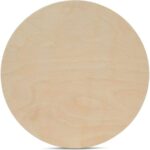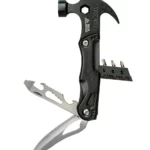I. Introduction to Upcycling Shovel Handles for Garden Benches
II. Step-by-Step Guide to Building Your Garden Bench
III. Tips for Finishing and Maintaining Your Upcycled Bench
When it comes to gardening and outdoor living, there’s nothing quite like the satisfaction of creating something beautiful and functional from items that might otherwise be discarded. Upcycling is more than just a trend; it’s a way to breathe new life into old objects, and one of the most creative ways to do this is by transforming shovel handles into charming garden benches. Not only does this process tap into your creativity, but it also helps reduce waste—win-win, right?
Why Upcycle Shovel Handles?
Shovel handles are typically made from sturdy wood, designed to withstand the rigors of gardening. Over time, as they get worn out or broken, it’s easy to toss them aside. But here’s the exciting part: with a little imagination and craftsmanship, those same handles can be transformed into a delightful garden bench that adds character to your outdoor space!
Here are a few reasons why upcycling shovel handles is a fantastic idea:
- Eco-Friendly: By giving new life to materials that would otherwise end up in a landfill, you’re contributing to a healthier planet.
- Unique Aesthetic: Each shovel handle has its own history and charm, making your garden bench a one-of-a-kind piece that tells a story.
- Cost-Effective: Upcycling is often much cheaper than buying new materials, allowing you to save some cash while still creating something beautiful.
- Fun and Rewarding: The process of building something with your own hands can be incredibly fulfilling. Plus, you get to enjoy the finished product right in your garden!
Who Can Do This?
You don’t need to be a master carpenter or an expert DIYer to embark on this project. Whether you’re a seasoned gardener or a beginner looking to spruce up your outdoor space, upcycling shovel handles can be a fun and accessible project. All you need is a bit of creativity, enthusiasm, and willingness to get your hands a little dirty!
Getting Started
Before diving into the project, it’s essential to gather your materials and tools. Look for sturdy shovel handles that can withstand the weight of a bench. You can find these at yard sales, flea markets, or even in your own garage! In addition to the handles, you’ll need some basic tools like screws, a drill, and possibly some additional wooden planks for the seating surface.
Once you’ve gathered everything you need, it’s time to let your imagination run wild! Think about how you want your bench to look—do you envision something rustic and natural, or perhaps a more polished and modern design? No matter your vision, the possibilities are endless!
Inspiration Awaits
Need a little inspiration? Take a stroll through your local garden center or browse through gardening magazines and websites. You’ll find a plethora of ideas for incorporating upcycled materials into your garden space. Additionally, consider checking out online communities and forums where DIY enthusiasts share their projects and tips. You may just stumble upon your next great idea!
So, are you ready to embark on this exciting journey of upcycling shovel handles into a beautiful garden bench? Trust us, your garden (and your wallet) will thank you!
Step-by-Step Guide to Building Your Garden Bench
If you’re ready to roll up your sleeves and dive into the world of upcycling, creating a garden bench from shovel handles is a fantastic project! Not only will you create a functional piece of outdoor furniture, but you’ll also be giving new life to materials that might otherwise end up in a landfill. So, grab your tools and let’s get started!
What You’ll Need
- Shovel handles: Look for sturdy, intact handles in good condition. You can often find these at yard sales, thrift shops, or your local hardware store.
- Wood for the seat: Choose weather-resistant wood like cedar or redwood for longevity.
- Wood screws: These will hold everything together securely.
- Power drill: Essential for making holes and driving screws.
- Saw: A hand saw or power saw will work, depending on what you have on hand.
- Sandpaper: This will help smooth out any rough edges on the wood.
- Wood finish or sealant: To protect your bench from the elements.
Step 1: Preparing Your Shovel Handles
Start by cleaning your shovel handles thoroughly. Use a wire brush to remove any dirt or old paint, then sand them down to smooth out any rough spots. You want these handles to be not only functional but also visually appealing!
Step 2: Designing Your Bench
Think about how you want your bench to look. A simple design is often the best, especially for beginners. Here’s a basic layout:
- The two shovel handles will serve as the legs.
- You’ll need a rectangular piece of wood for the seat, which should be wide enough to comfortably accommodate seating.
- Consider adding a backrest for extra comfort using additional wood pieces or even other upcycled materials!
Sketch out your design before you start cutting anything. This will help you visualize your project and ensure you have all the necessary pieces.
Step 3: Cutting & Assembling the Seat
Once your design is sketched, it’s time to cut the wood for the seat. Measure carefully and use a saw to cut your wood to the desired dimensions. After cutting, lay the shovel handles on the ground parallel to each other, then place the wood seat on top. Secure it with wood screws—make sure everything is level!
Step 4: Securing the Legs
To attach the shovel handles as legs, you may need to drill holes in them to fit the wood securely. Use screws to connect the handle ends to the seat. If your handles have a curve, don’t worry! That just adds to the character of your bench.
Step 5: Sanding and Finishing Touches
Once everything is assembled, sand down any rough edges. After that, it’s time to apply a wood finish or sealant to protect your bench from rain and sun damage. This not only preserves the wood but enhances its natural beauty, making your bench a stunning addition to your garden!
Final Thoughts
Congratulations! You’ve just built your own garden bench using upcycled shovel handles. Not only is it eco-friendly, but it’s also a unique piece that tells a story. Enjoy your new seating area, and don’t forget to add some colorful cushions for extra comfort!
Tips for Finishing and Maintaining Your Upcycled Bench
Congratulations on crafting your very own upcycled garden bench using shovel handles! Now that you’ve put in the hard work, let’s talk about how to make sure your bench not only looks great but lasts for years to come. Proper finishing and maintenance will keep your bench in tip-top shape and enhance its charm. Here are some friendly tips to help you out!
1. Choosing the Right Finish
First things first, let’s talk about finishing your bench. A good finish will protect the wood from the elements and prevent it from rotting. Here are your options:
- Outdoor Wood Sealer: This is a fantastic choice if you want to keep the natural wood look. It provides a protective barrier against moisture without changing the appearance of the wood too much.
- Varnish: Varnish gives a hard, glossy finish that can really make your bench shine. Just keep in mind that it might require more frequent touch-ups.
- Paint: If you’re leaning towards a pop of color, go for outdoor-rated paint. It can give a fun, personalized touch to your garden bench.
Remember to apply the finish in a well-ventilated area and follow the manufacturer’s instructions for the best results. It’s also wise to let the finish cure completely before using your bench.
2. Seasonal Maintenance
Your upcycled bench will face the elements, and seasonal maintenance can make a big difference. Here are some steps to follow:
- Spring: Check for any signs of wear or damage that may have occurred over the winter. Touch up any scratches or chips in the finish and give it a good cleaning.
- Summer: Depending on your climate, you may need to apply a refresher coat of sealer or paint to protect against UV rays. This will help maintain the color and integrity of your bench.
- Fall: As leaves start falling, be sure to clear them off your bench regularly to prevent moisture buildup. A quick wipe-down will keep it looking fresh.
- Winter: If you live in a region with heavy snowfall or ice, consider storing the bench indoors or covering it with a waterproof tarp to protect it during the harsh months.
3. General Care Tips
Beyond seasonal maintenance, here are some everyday care tips to keep your bench looking fabulous:
- Regular Cleaning: Give your bench a quick wash with soap and water to remove dirt and debris. A soft brush or cloth will do the trick without scratching the wood.
- Avoid Harsh Chemicals: When cleaning, stay away from abrasive cleaners or bleach. They can damage the finish and the wood itself.
- Watch for Pests: Keep an eye out for any signs of wood-boring insects. If you spot any, treat the area promptly to avoid further damage.
With these finishing and maintenance tips, your upcycled garden bench will not only stand out in your garden but will also serve as a lasting piece of functional art. Enjoy your time in the garden and happy upcycling!










Comments